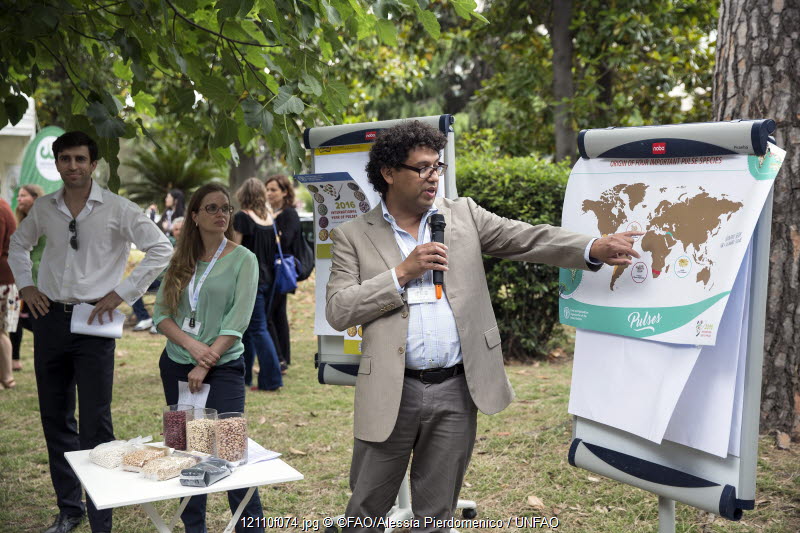Pulses market

As part of the activities to promote the International Year of Pulses (IYP) 2016, FAO hosted a pulses market in the garden at headquarters from 30 May to 3 June.
The market aimed at highlighting the rich biodiversity as well as the dietary and nutritional benefits of pulses in the spirit of the international year, featuring the participation of local farmers and producers with their pulse-based produces on display. They represented a broad range of family farming enterprises, members of the World Farmers’ Organisation.
Under the IYP’s motto “Nutritious seeds for a sustainable future,” the weeklong event served to highlight the role that pulses can play in ensuring food and nutritional security in the contexts of the Zero Hunger Challenge and the 2030 Agenda for Sustainable Development.
Products included a selection of pulse-based goods from dried varieties of beans, peas and lentils, to pulse flours and other processed derivatives. Among these, it is important to mention local pulses crops such as Fagiolo rosa, Fagiolina del Trasimeno, Lenticchia di Santo Stefano di Sessanio and other varieties typical of central Italy that have been preserved for centuries by local smallholder farmers.
The farmers proudly highlighted the special features of their pulses: “These varieties do not need soaking before cooking thanks to the composition of the volcanic soil of the region, which makes their peel thin and more digestible”.
FAO experts provided visitors with an overview on the origins, trade and nutritional values of the main varieties of pulses.
Chickpeas and lentils were grown and eaten by ancient civilizations who prospered in the Fertile Crescent. Today, chickpeas are mostly produced in India, while lentils in Canada. They are renowned for their high content of dietary fiber and iron respectively.
Cowpea originated in Southern Africa and thanks to its properties is still a key component of traditional intercropping systems in Sub-Saharan Africa. Nigeria is the largest producer with over 2 million tons. Only a small proportion of cowpeas enters international trade. Cowpea has to be prepared and cooked properly because of its high concentration of antinutrients.
Beans originated in Central and South America and have been a staple food for many Native American peoples. Raw beans contain about 20-25% of protein. When combined with cereals they provide a “complete” protein profile.
The pulses market provided the perfect setting for a spontaneous exchange of ideas and information on pulses between FAO and local farmers. The possibility of direct contact between staff – including technical experts- and small-scale and family farmers is extremely valuable to both parties in the framework of this international year.

